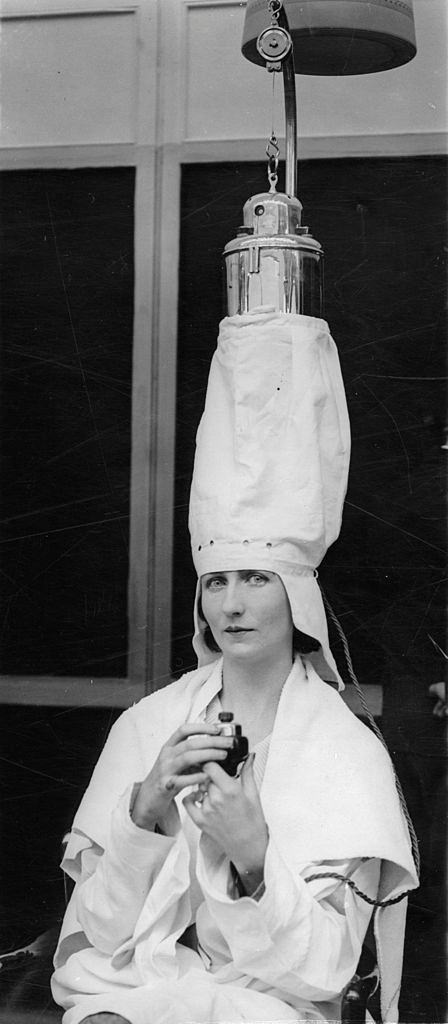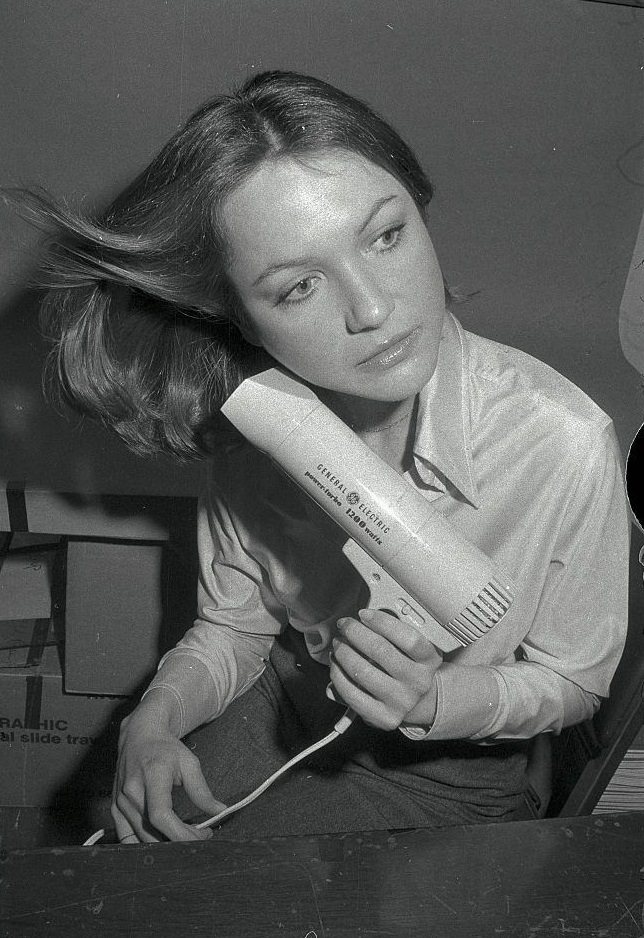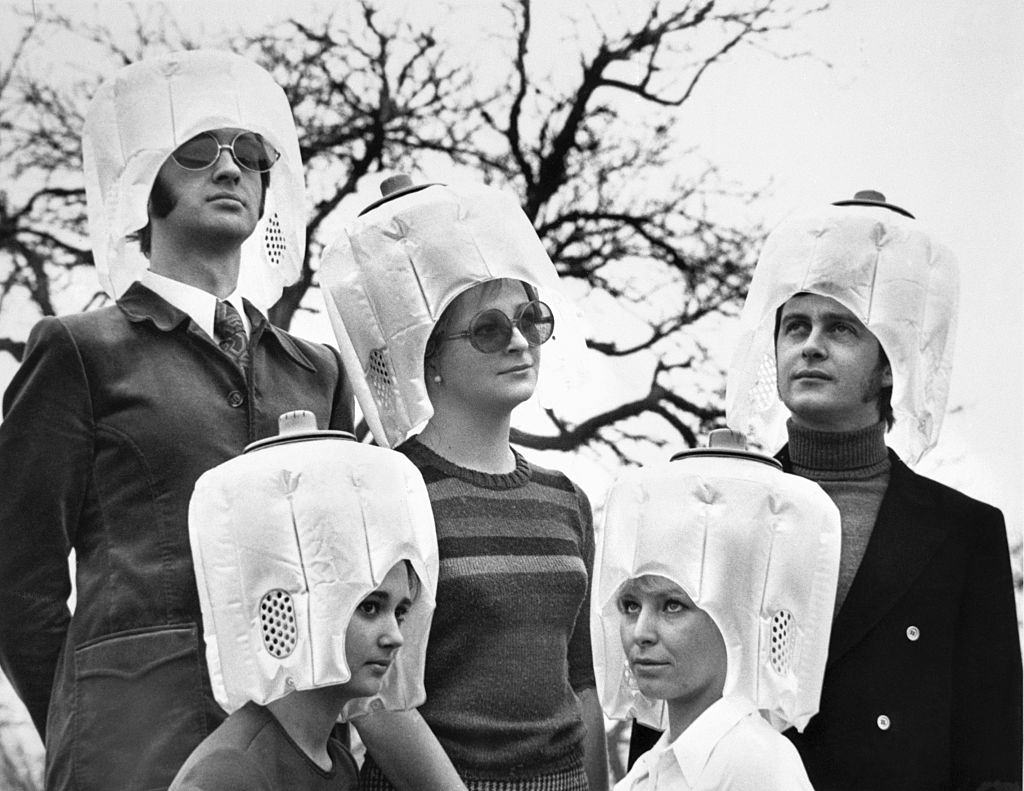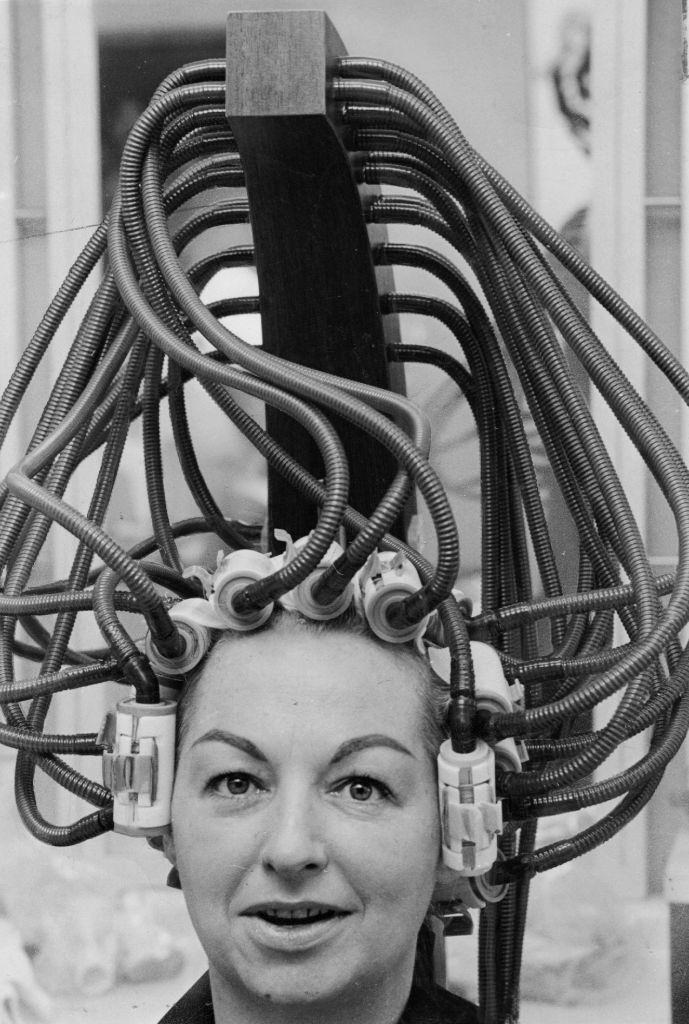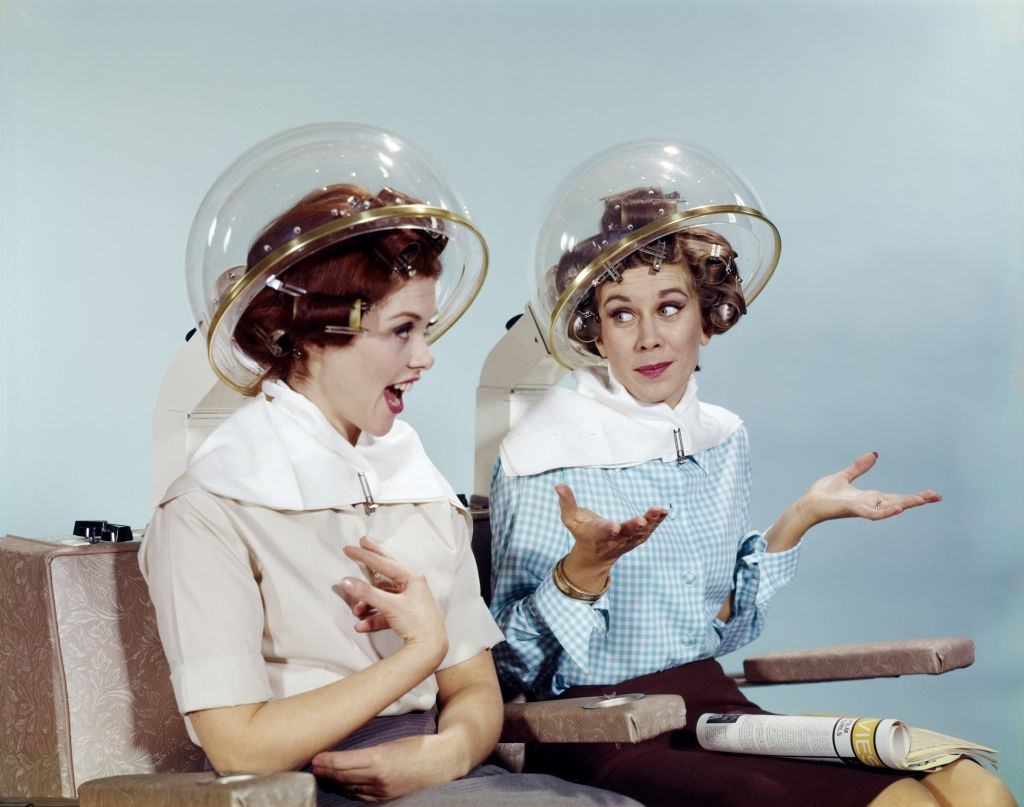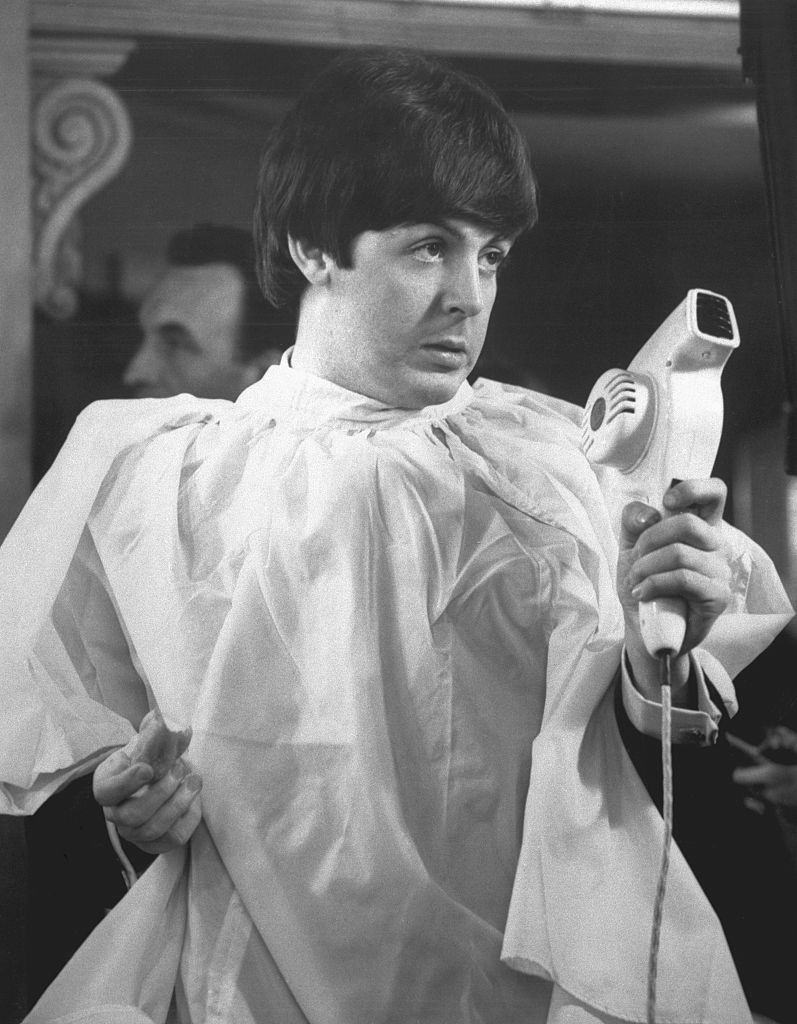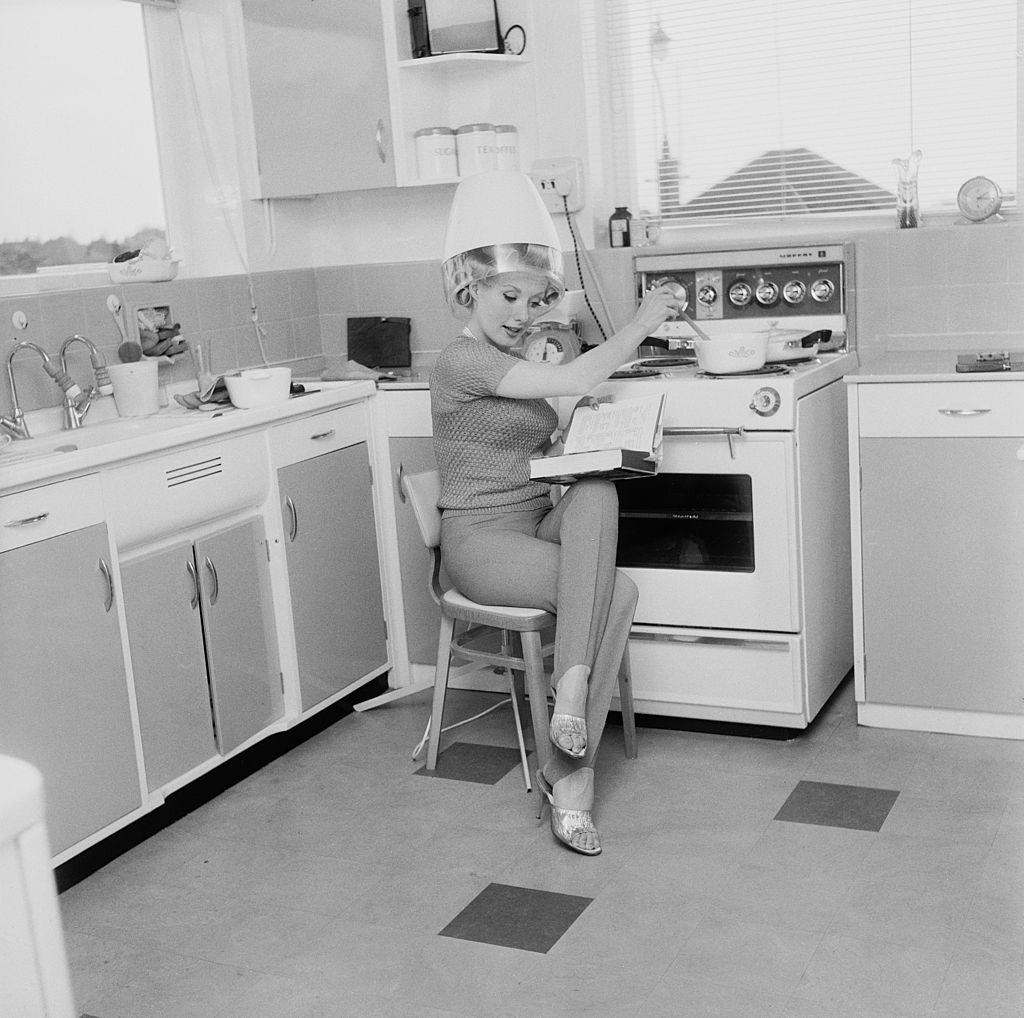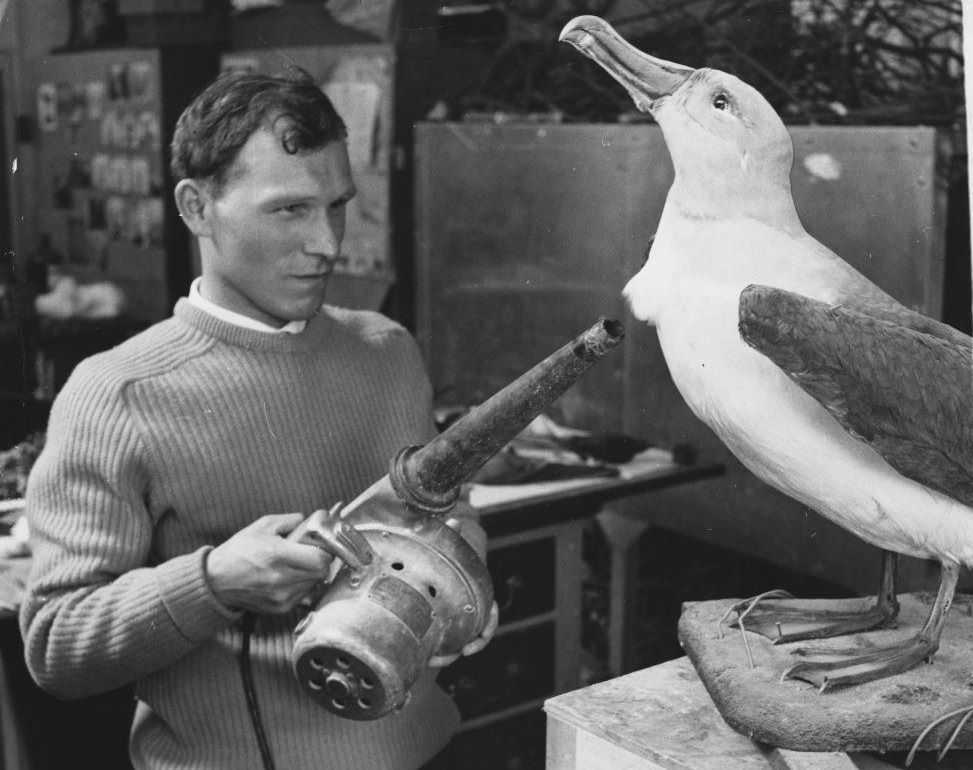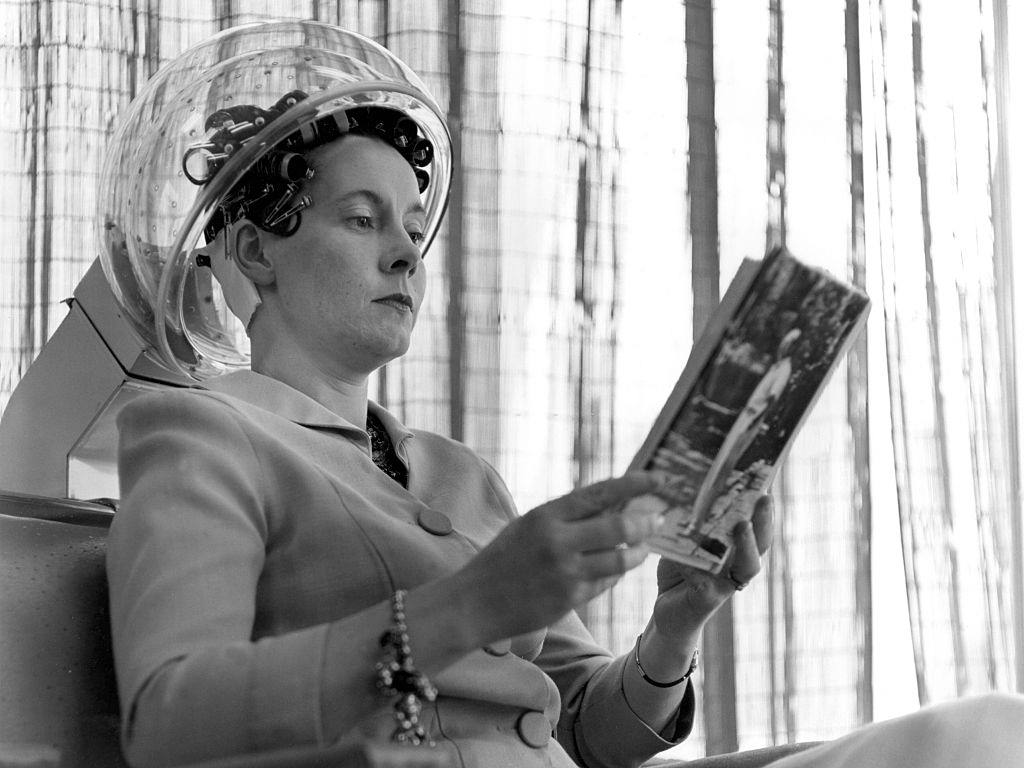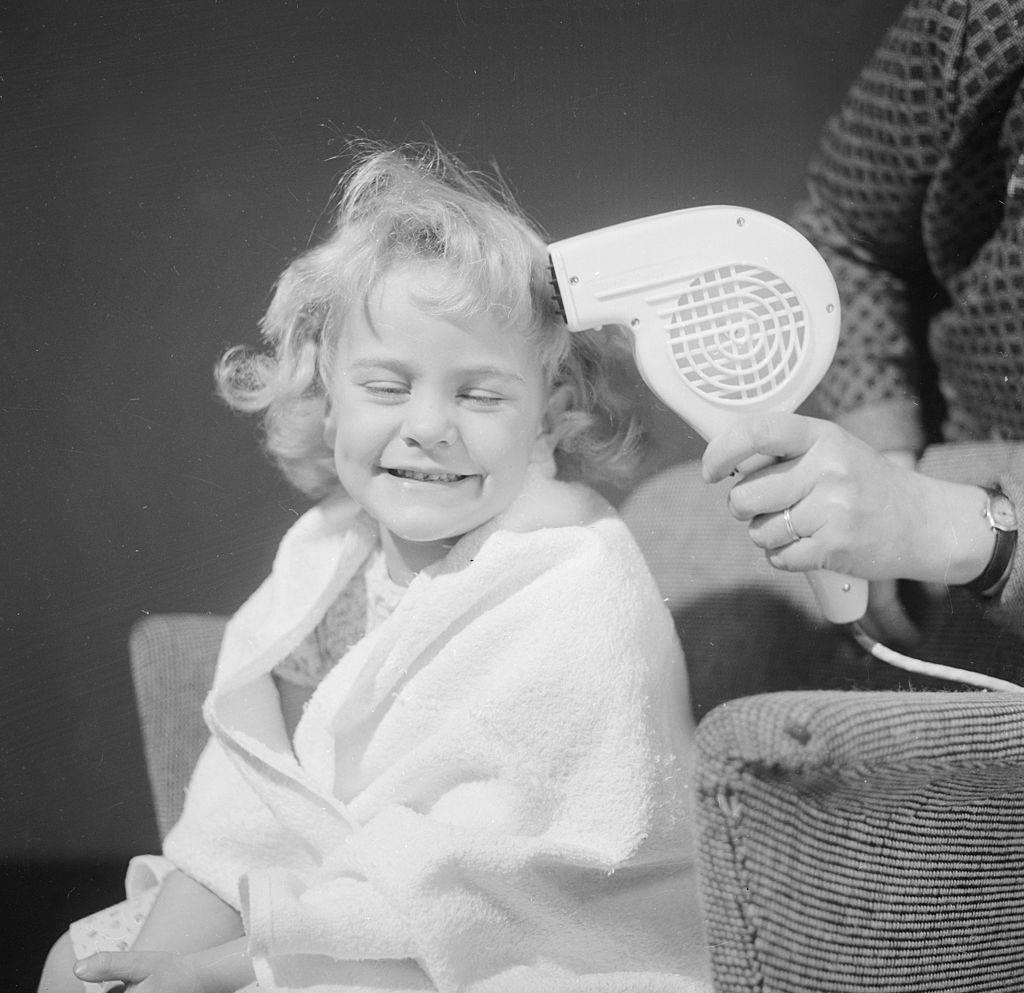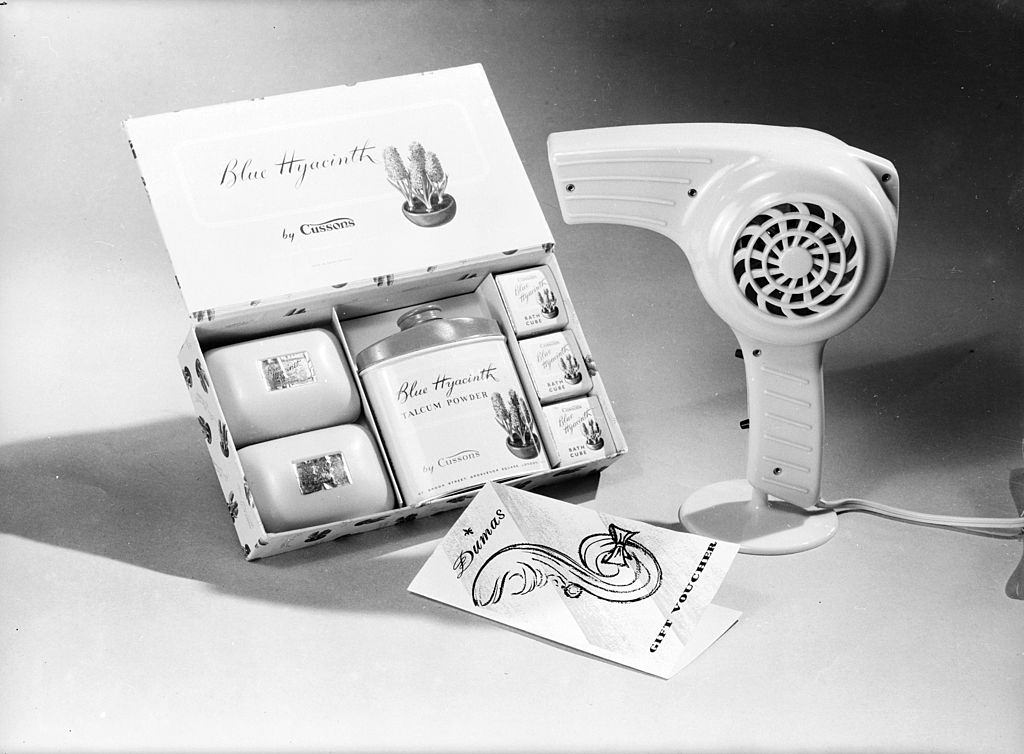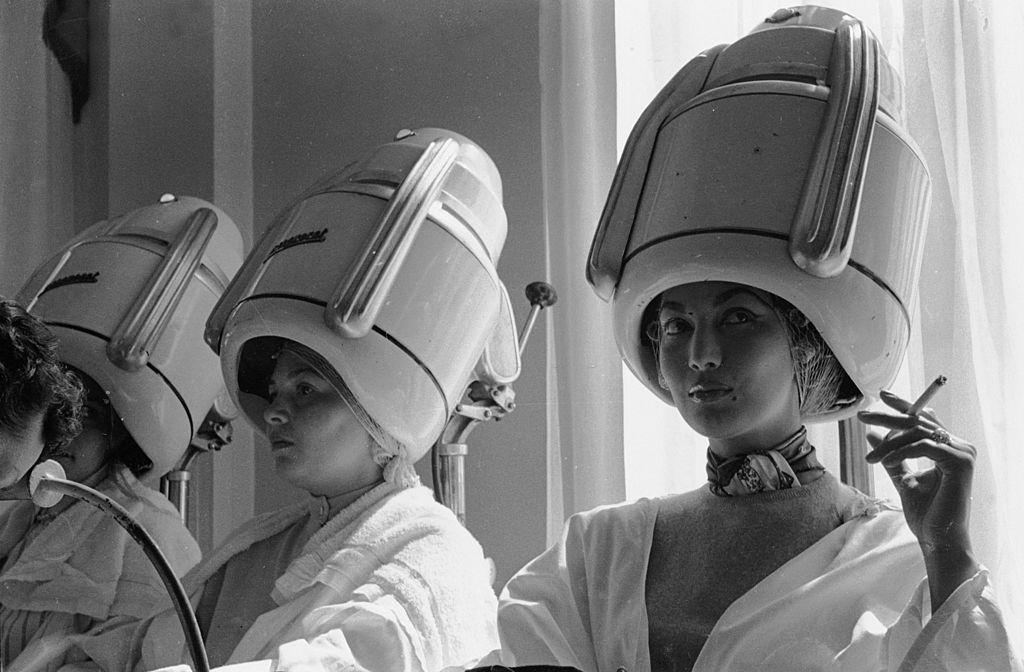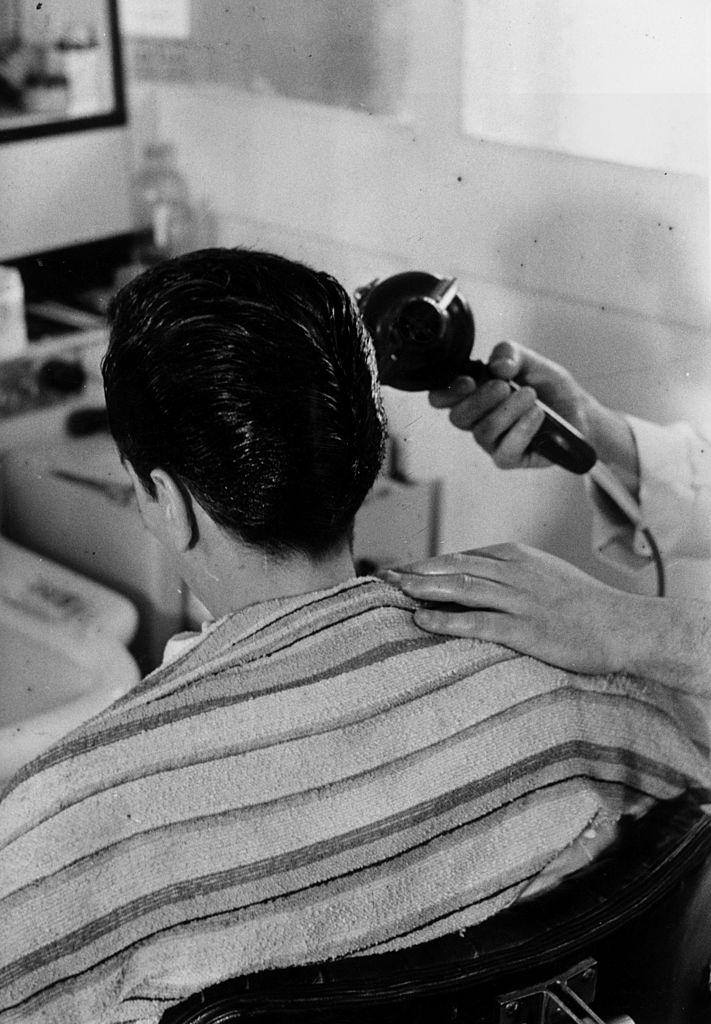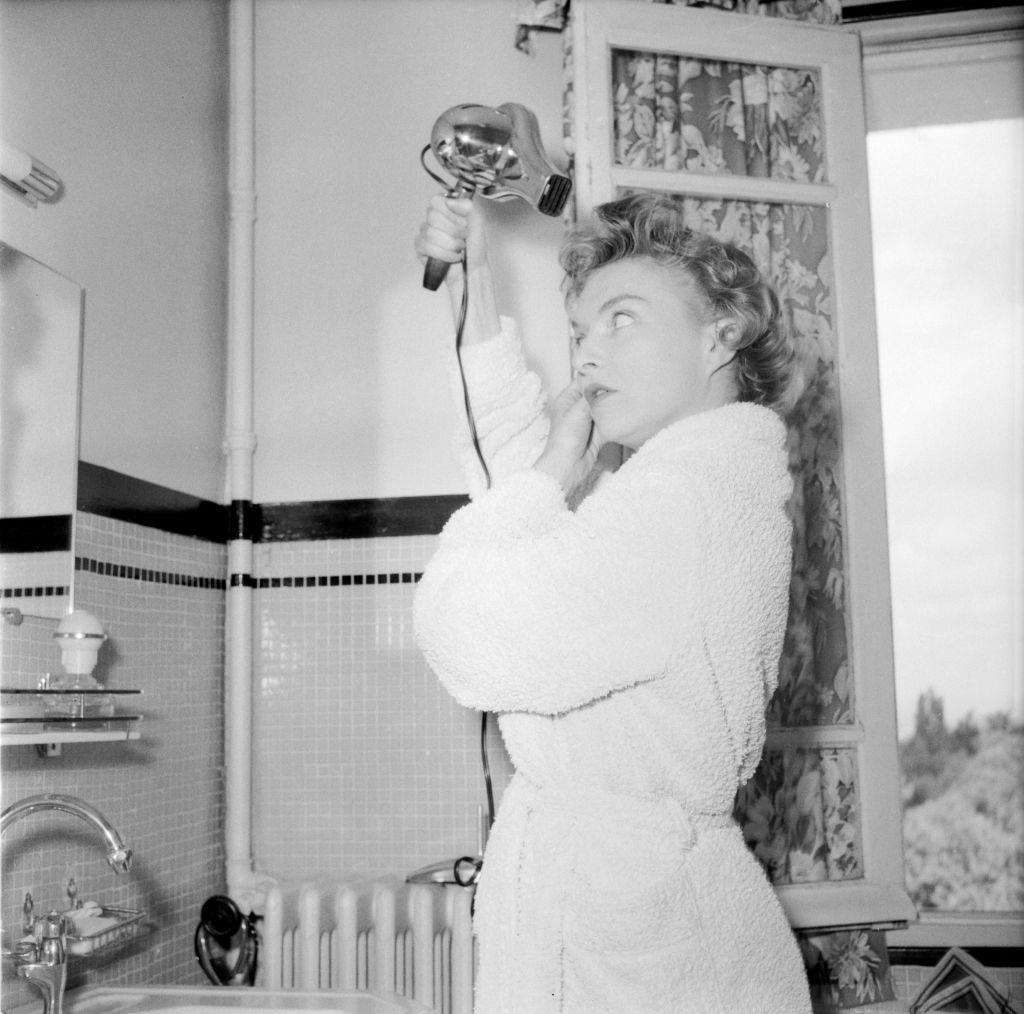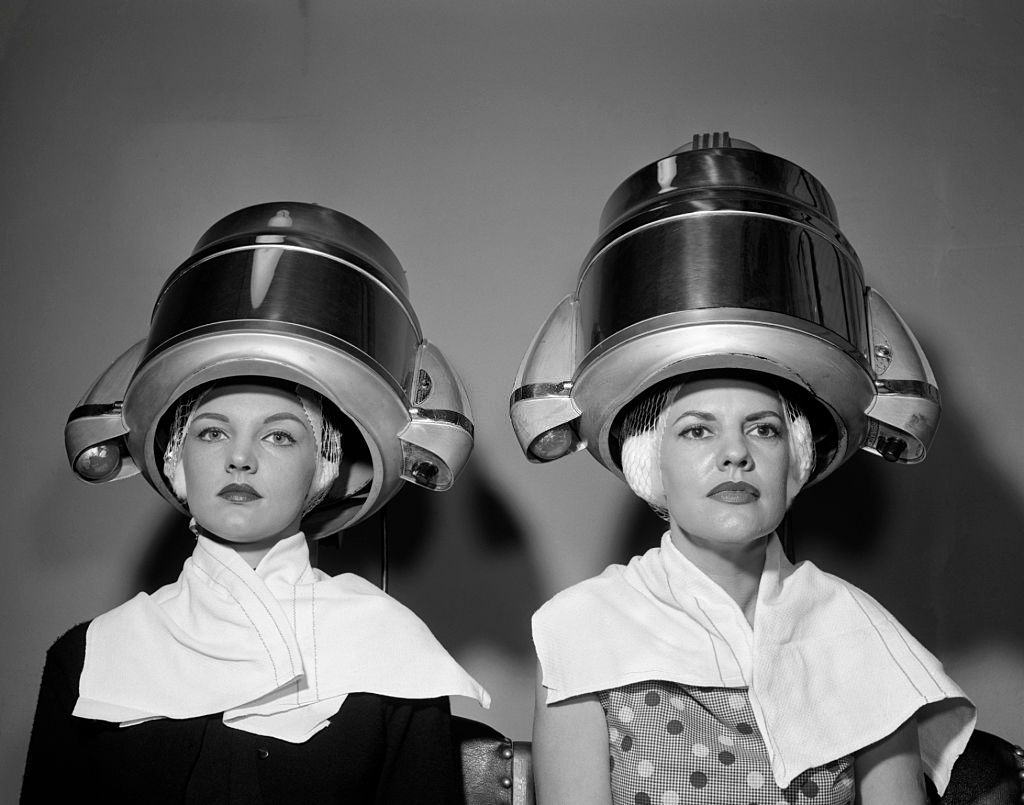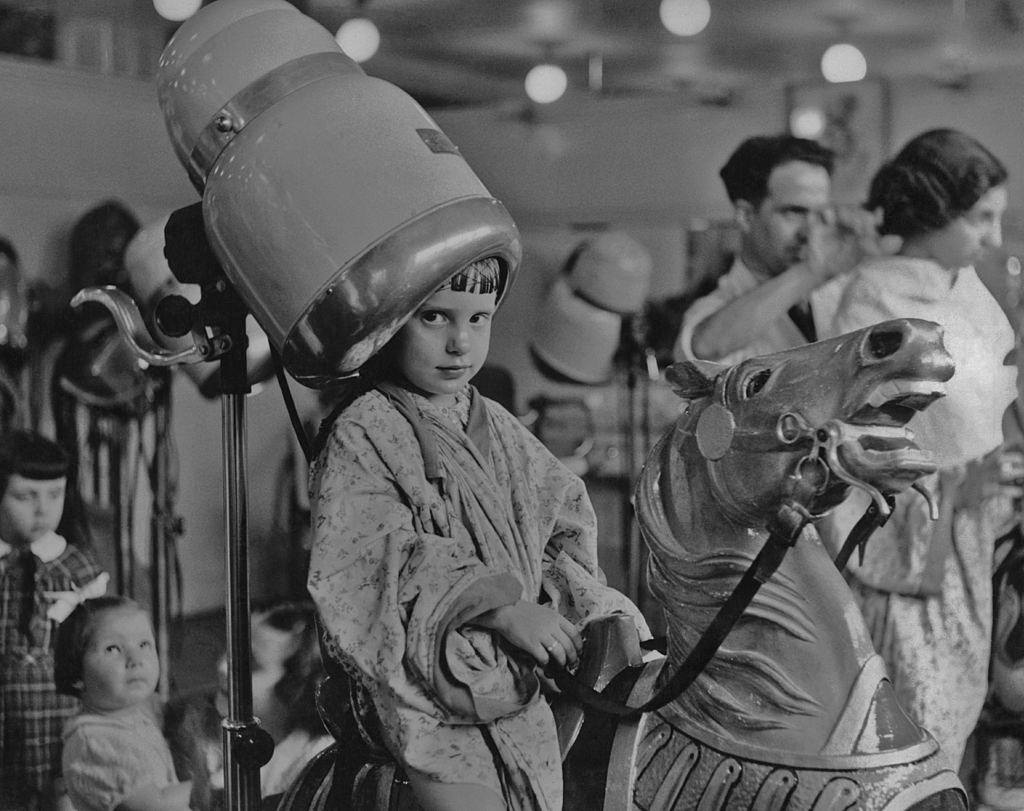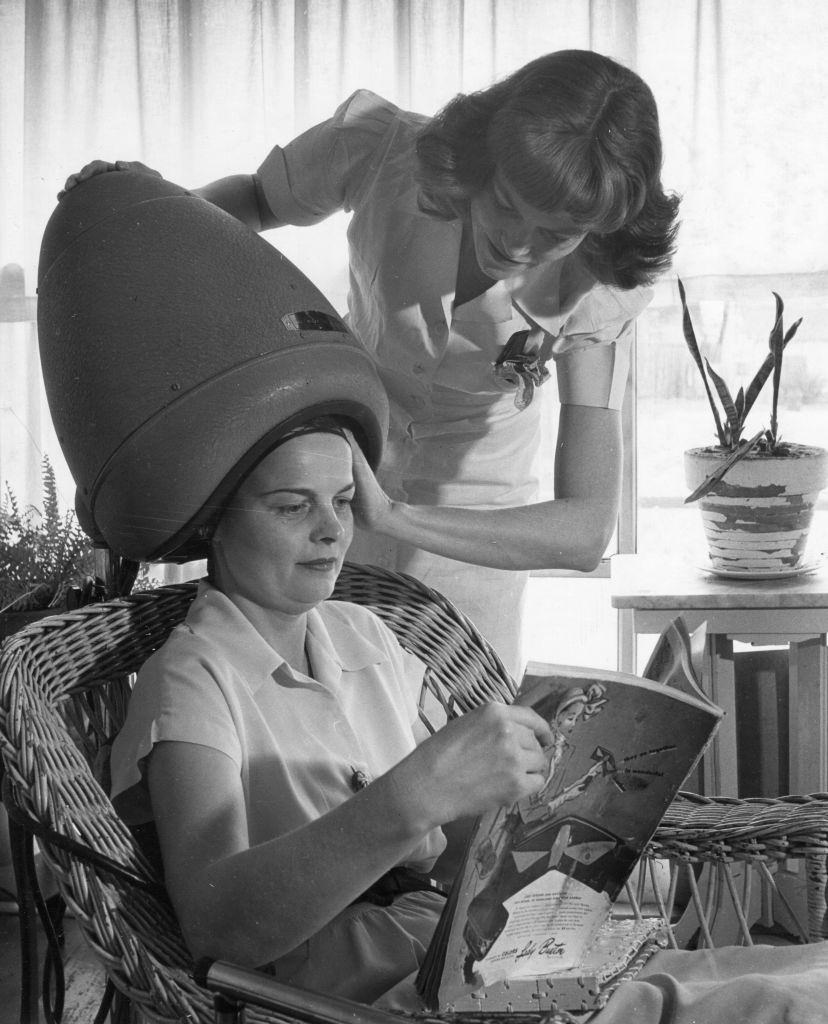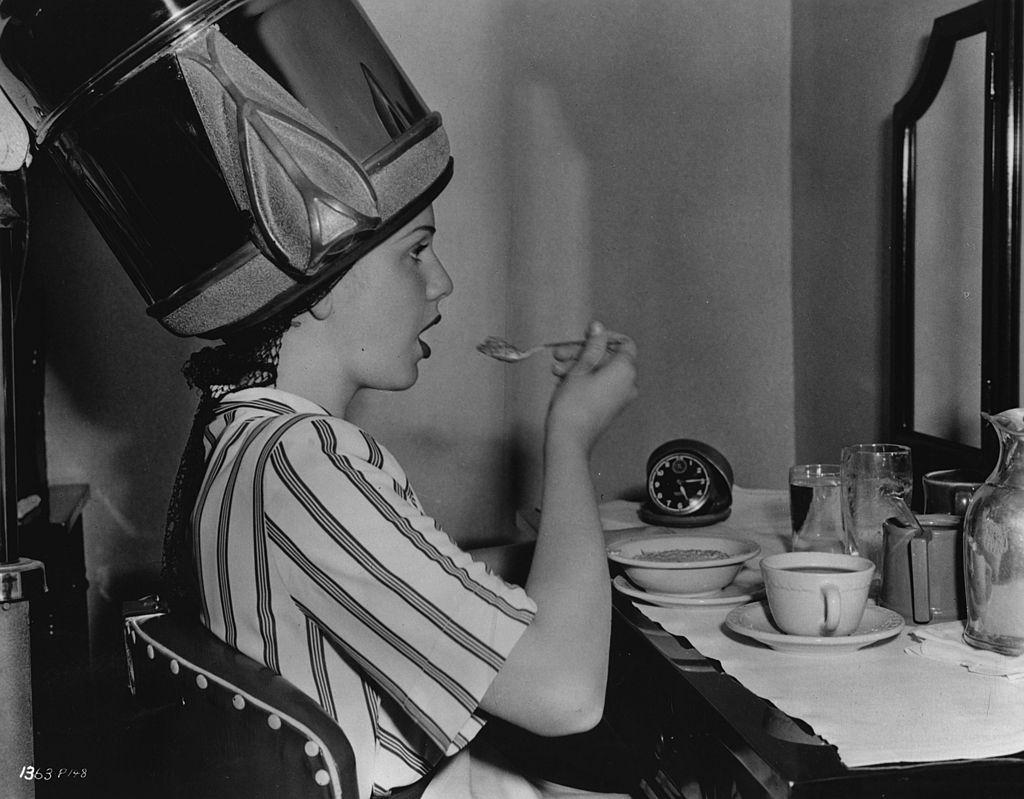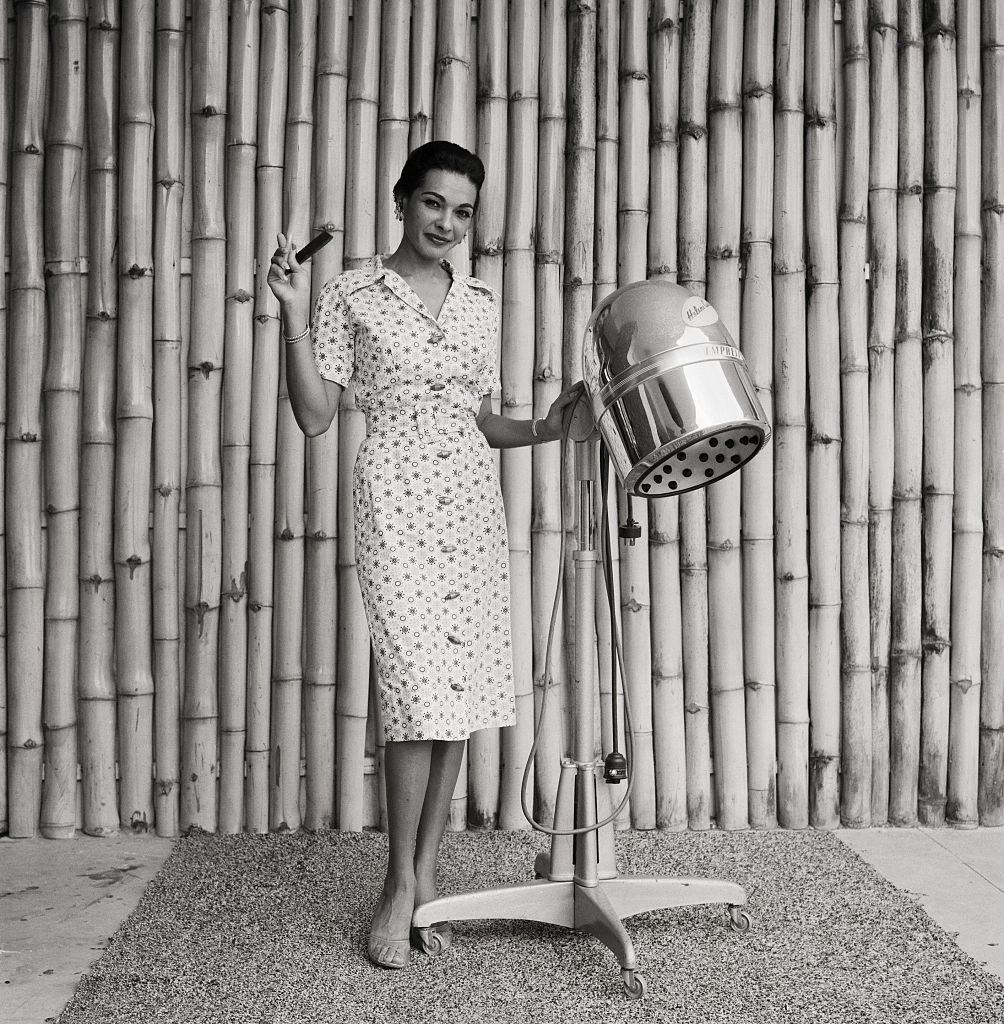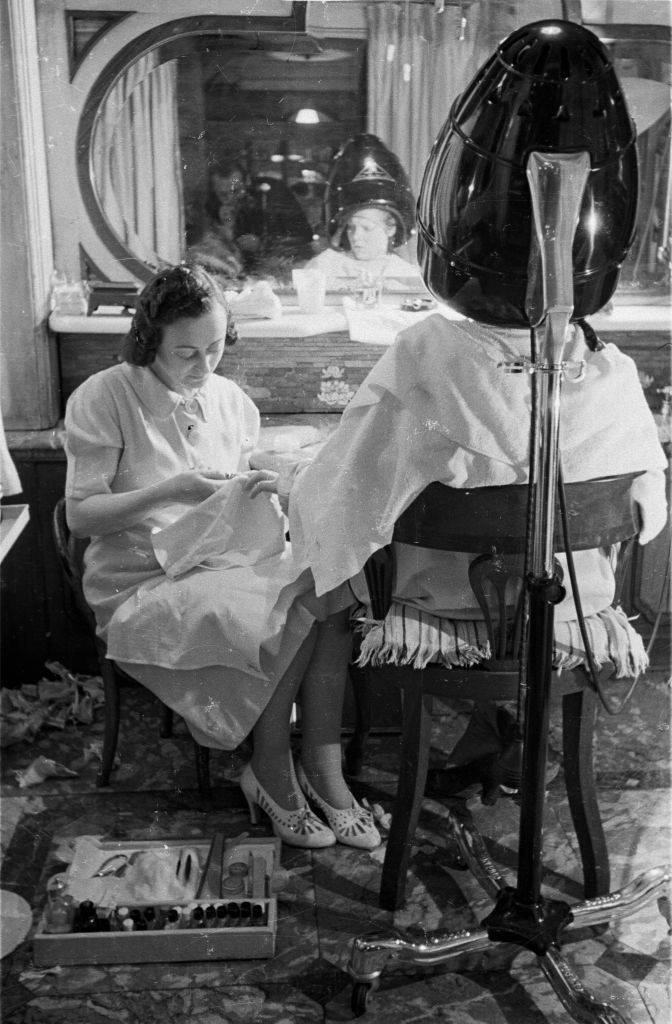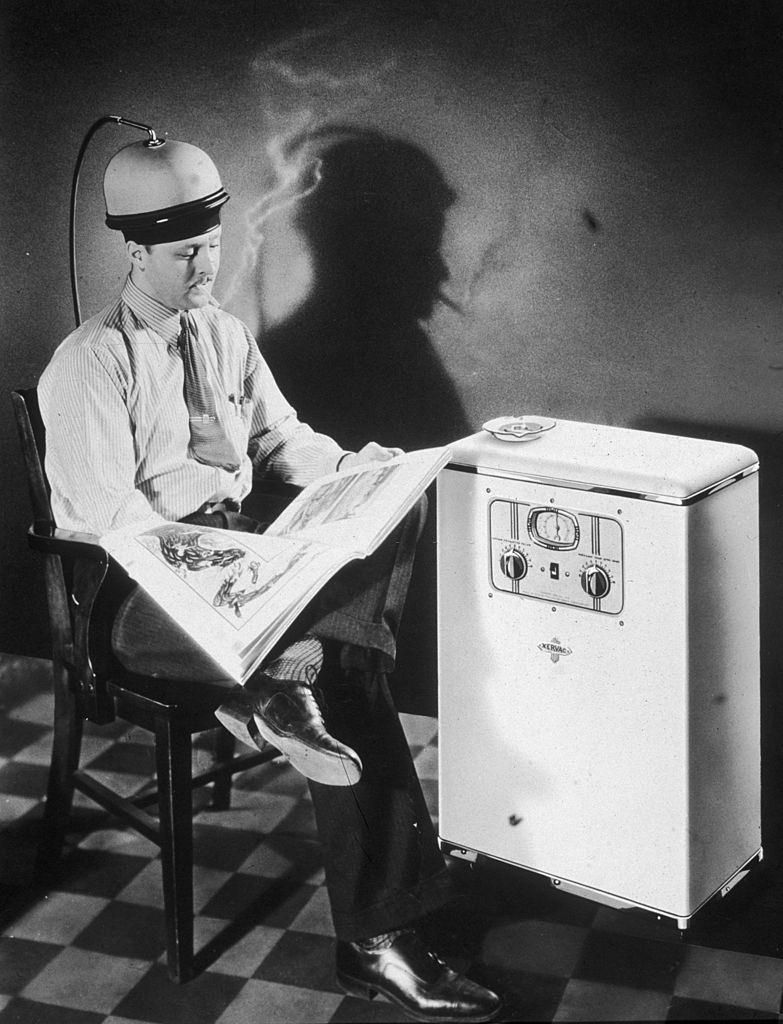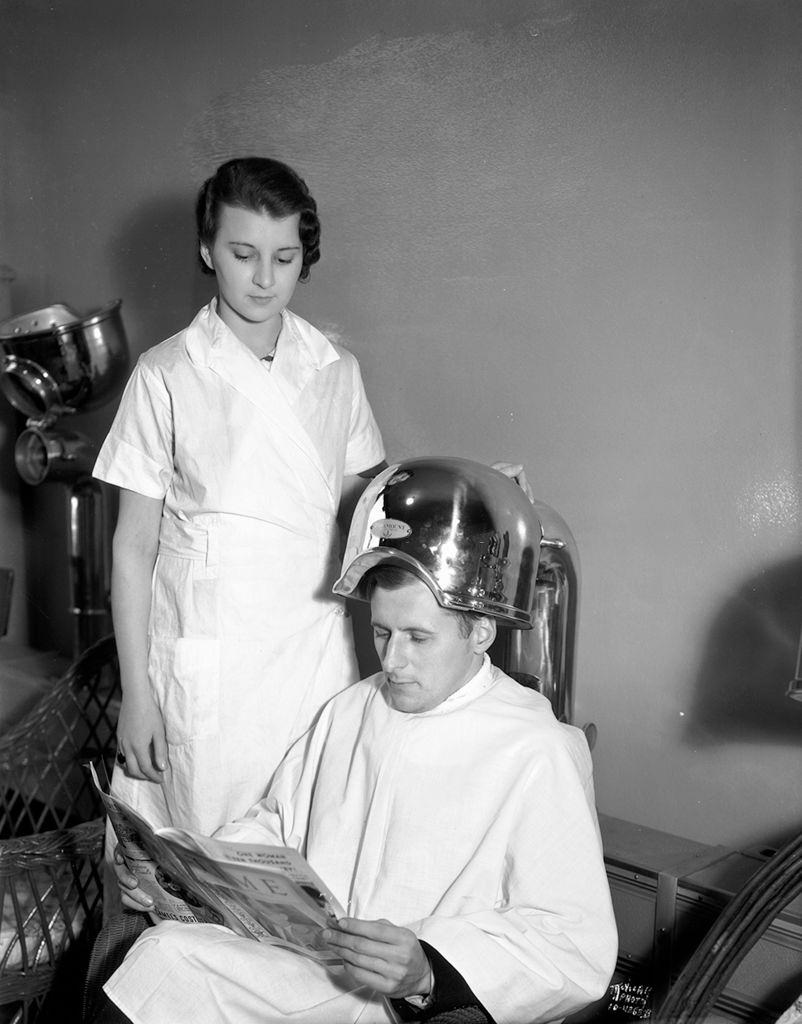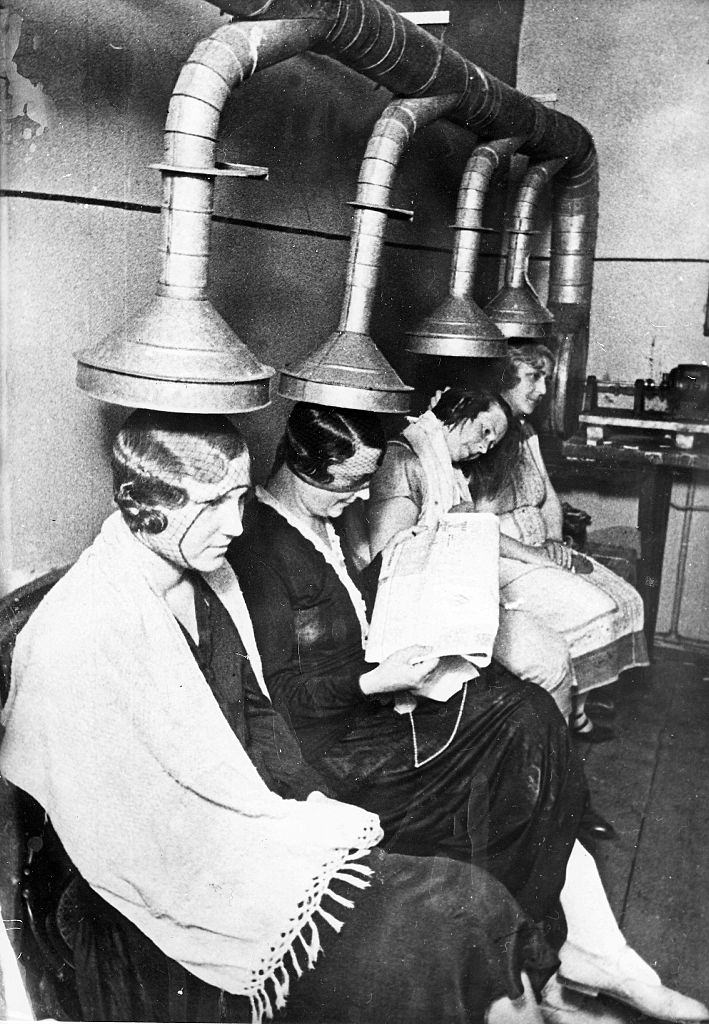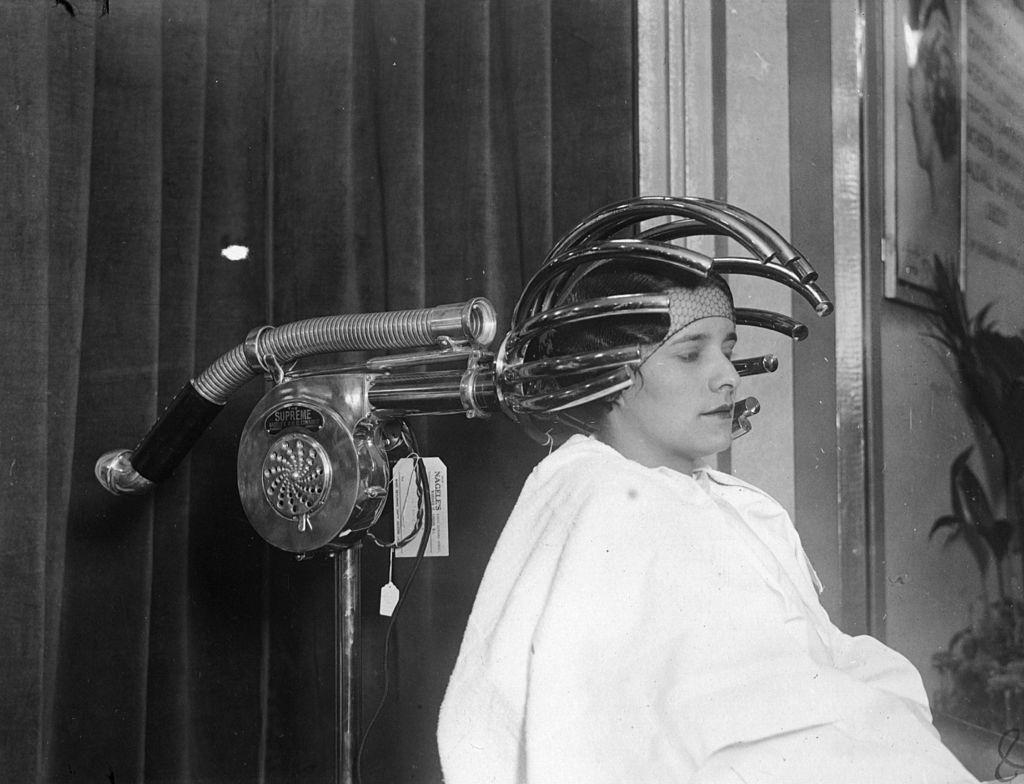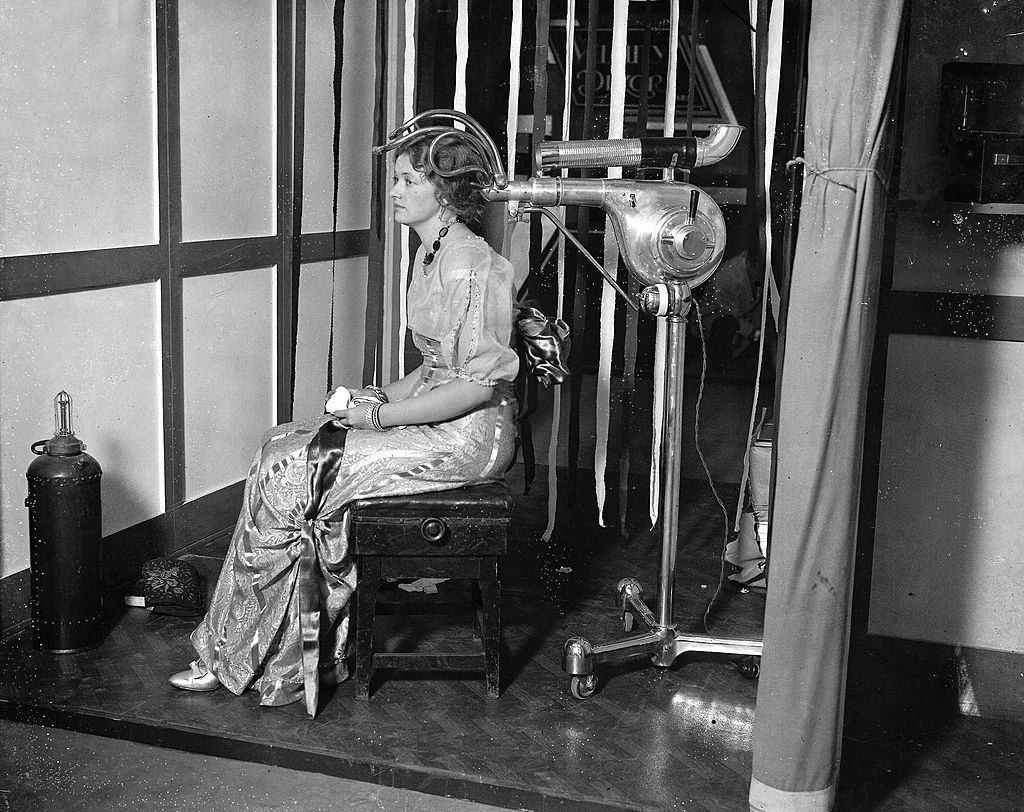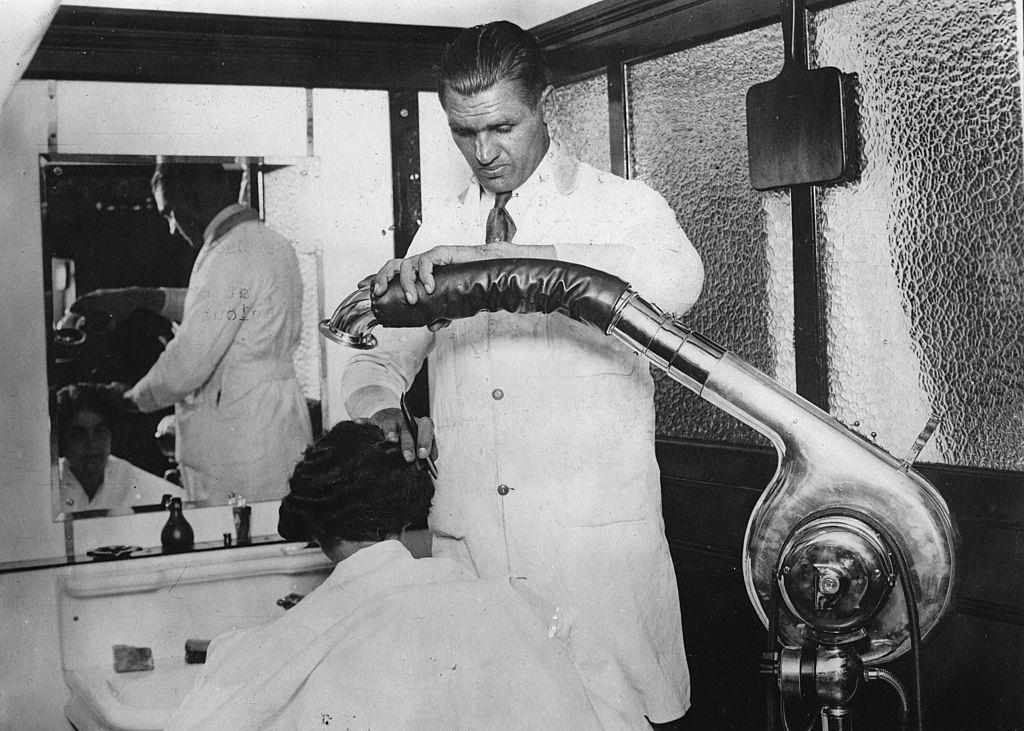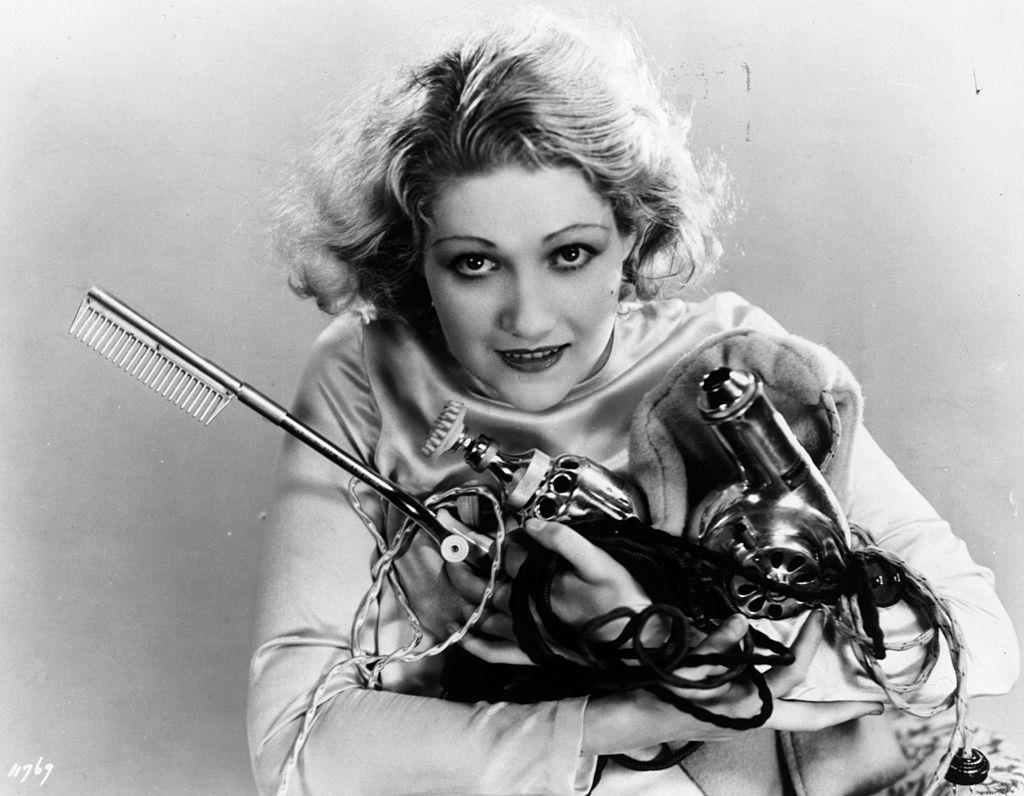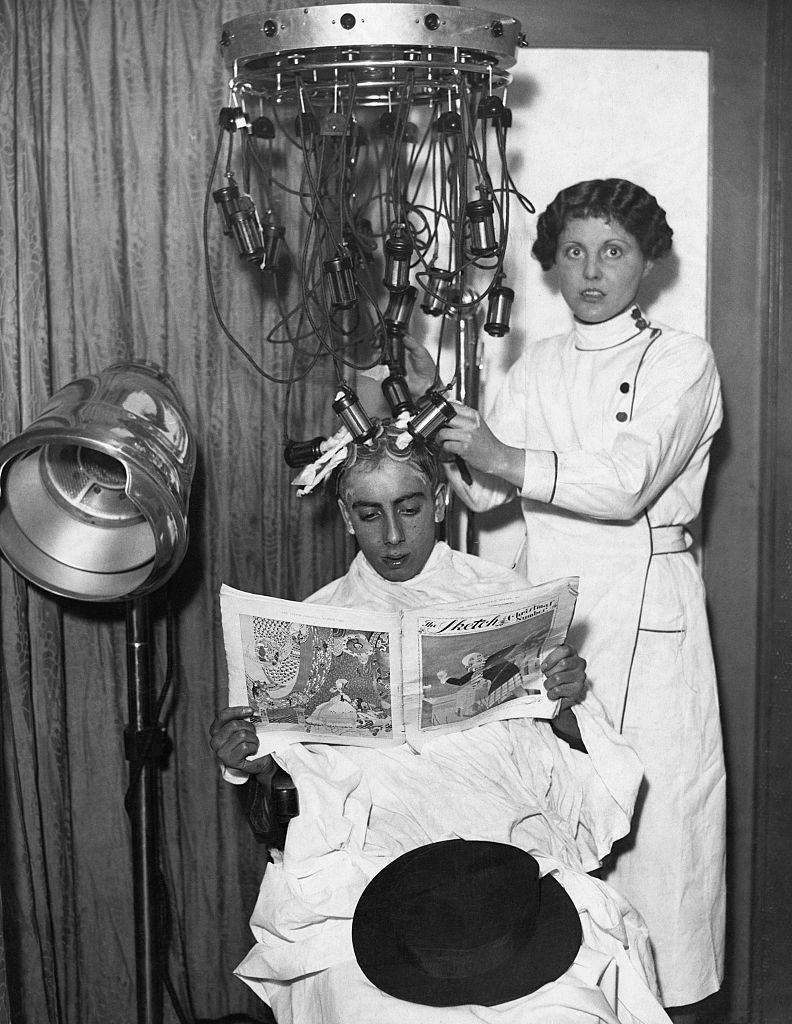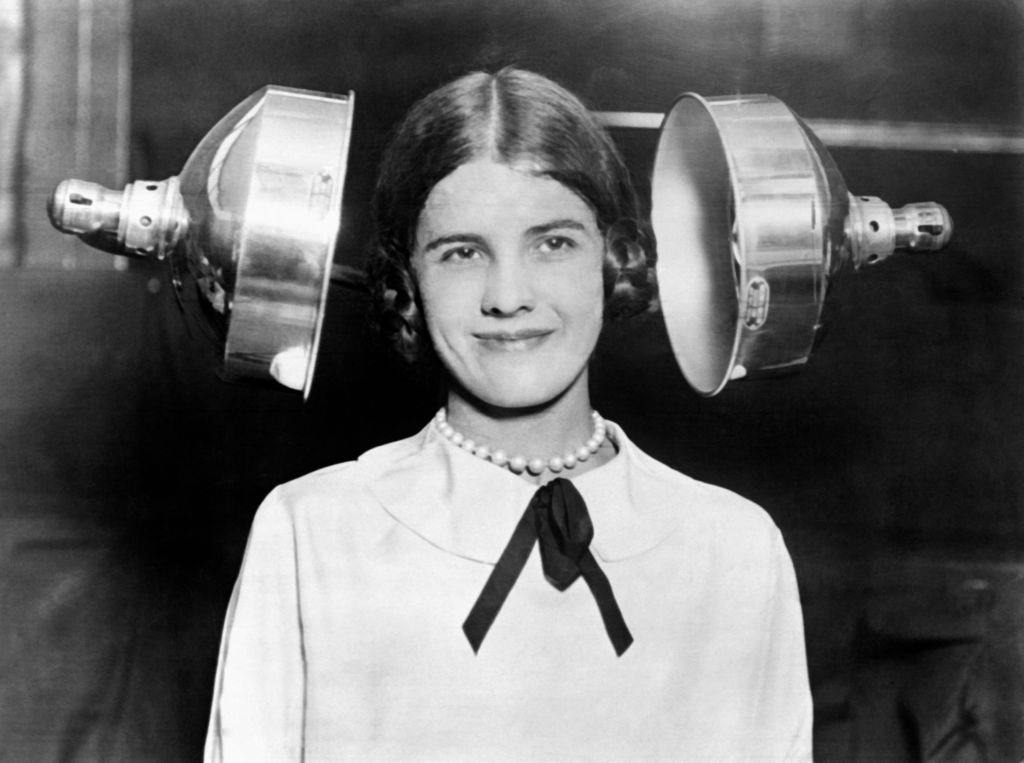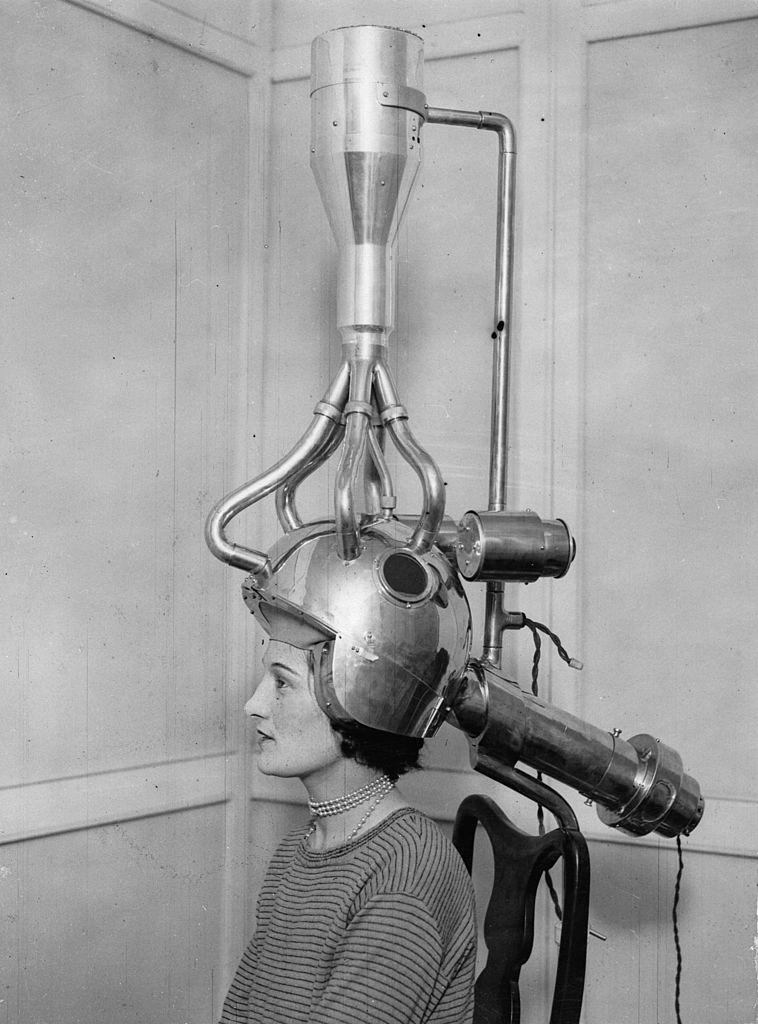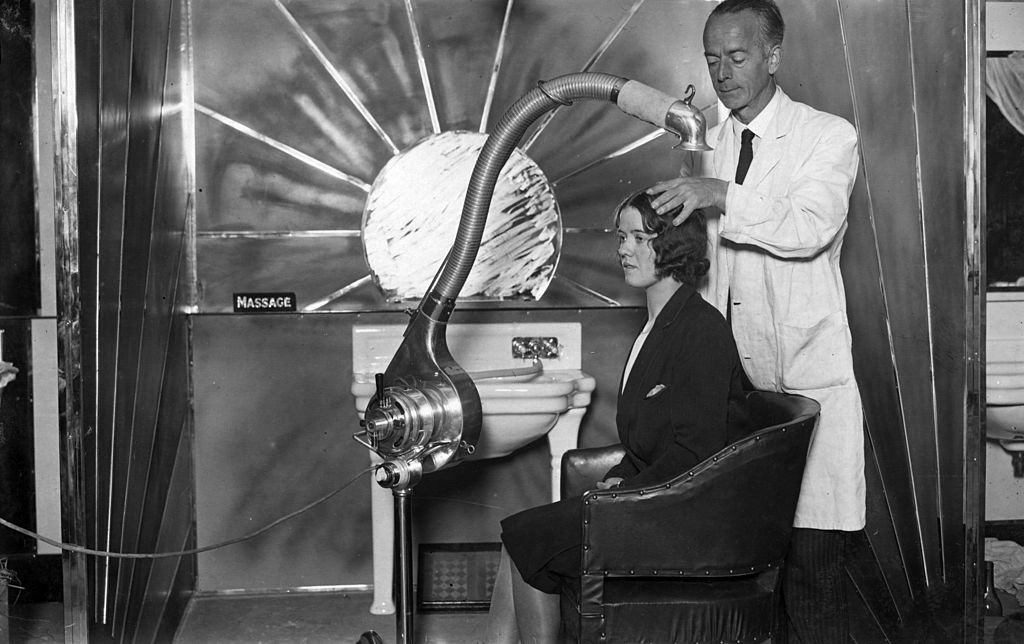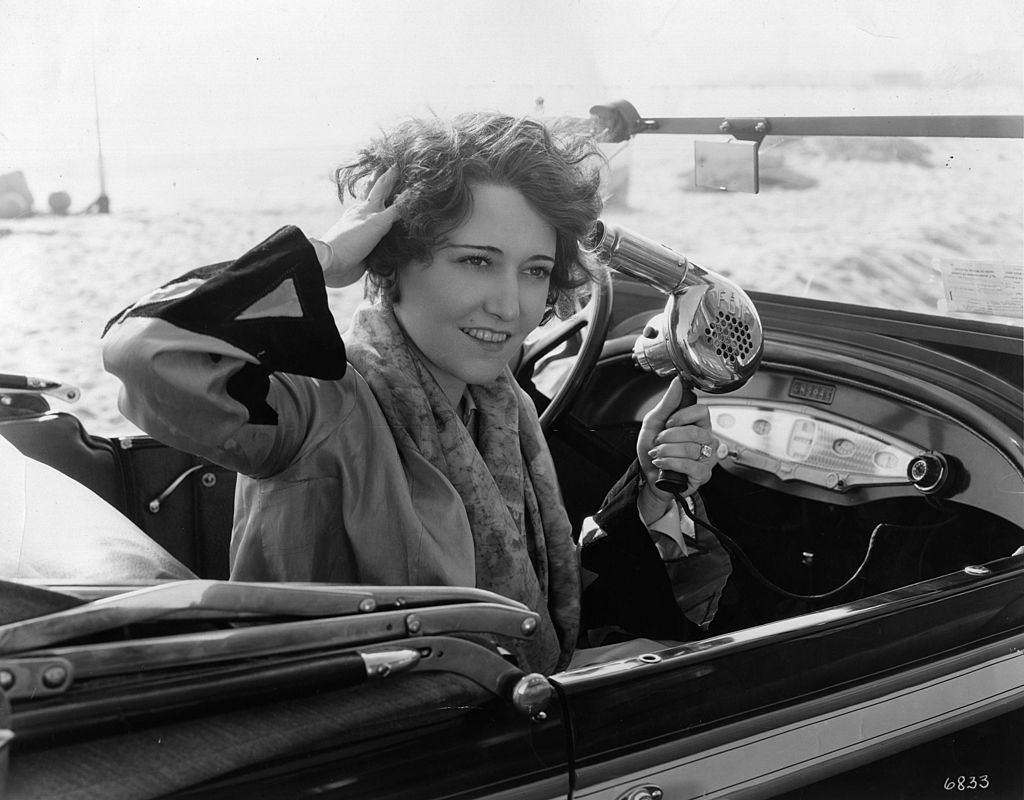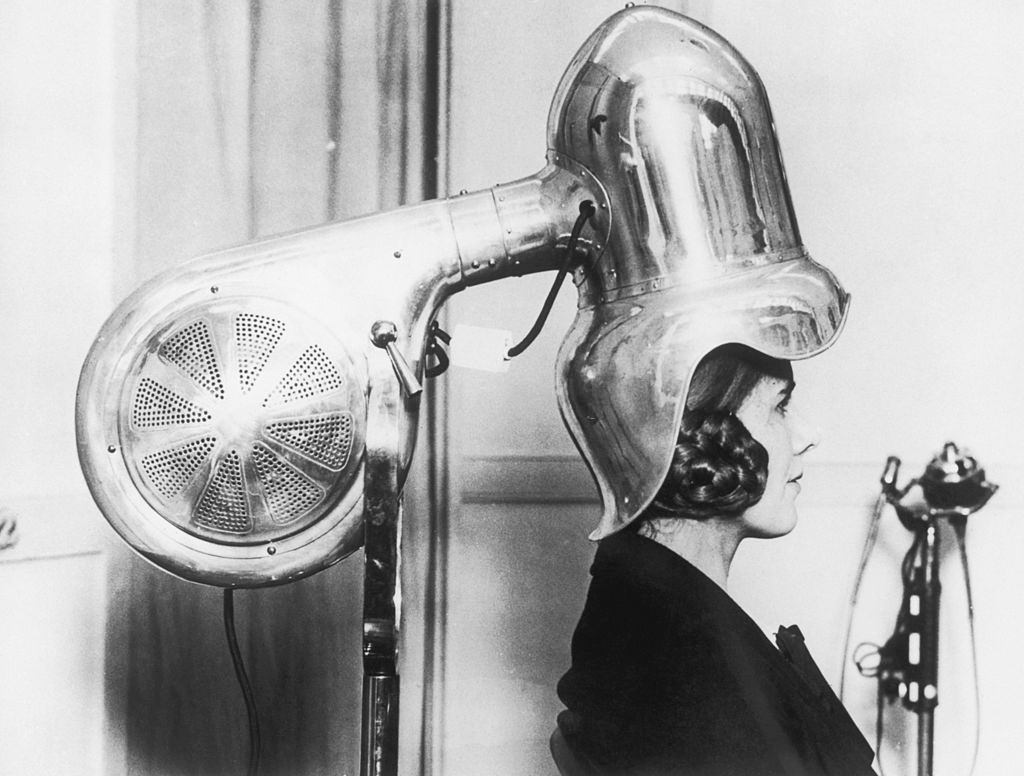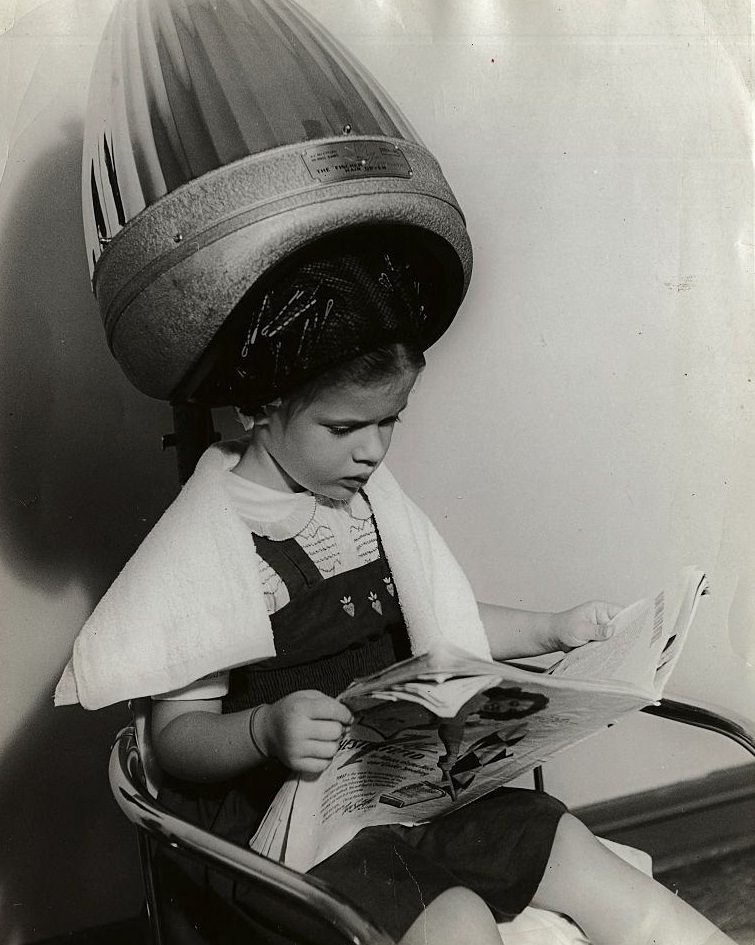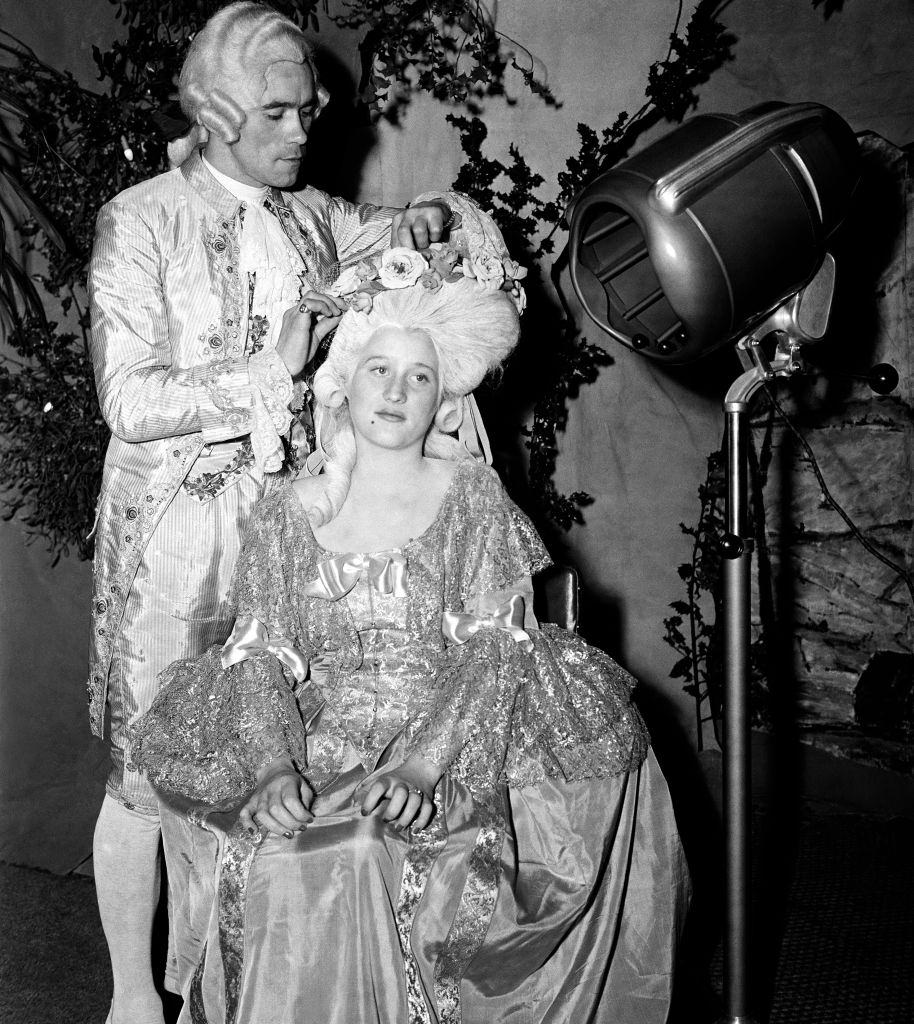The first blow dryer was invented in the late 19th century by Alexander F “Beau” Godefroy in France. It was clumsy and seated like a vacuum cleaner, essentially a giant hose connected to a heat source. In the beginning, the hairdryer wasn’t a home appliance. Women wore their hair long and looped, or curled into elaborate updos during that time. On formal occasions, they might weave ribbons, feathers, or flowers into their hair. Godefroy sought to speed up the labor involved with these creations. Unfortunately, his machine failed to circulate air properly, so the time saved wasn’t substantial. Moreover, the prototype was too unwieldy to be widely adopted.
In the early 1920s, the first handheld hair dryers became available, and hair dryers started to gain popularity. These metal, gun-shaped models appeared simultaneously as women’s hairstyles were shifting from a mountain of Gibson Girl curls to tidy, easier-to-shape bobs. That was a significant change from previous trends. Handheld hair dryers were still challenging to use in the beginning. Metallic (often aluminum) casings made them challenging to handle. The devices also took far longer to dry, as they only drew 100 watts of electricity rather than the 2,000 watts of modern versions. As a result, they were exhausting to use over the long period it took to dry. Early versions had pedestals to rest tired arms.
They were marketed as having “Loads of hot or cold air instantly, just by pressing the handle button. For the salon, hooded versions were added to the handheld versions. In the 1930s, hooded dryers, made of metal and later plastic, became widely used because they provided an even, all-over heat. They became a defining feature of salon culture in the decades to follow. It was an uncertain time for American women. Women began joining the workforce during the 1940s war effort. Later, they returned to the home. During these postwar years, the salon became a precious second space for women outside of their homes. The process of molding hair into the molded hairstyles popular back then, such as Veronica Lake’s cascading S-shaped waves or Grace Kelly’s sculpted bob, required regular salon appointments, establishing the salon as a popular weekly gathering place.
In 1951, the bonnet dryer was introduced to consumers. This type of dryer was attached to a tube fitted into a bonnet, usually carried in a small box, and placed on top of a person’s head. This worked by giving an even amount of heat to the whole head simultaneously. Hairdryers with rigid hoods also came into use in the 1950s, most often seen in salons. It had a hard-plastic helmet that wrapped around the person’s head. The dryer works similarly to the bonnet dryers of the 1950s but at a much higher voltage. In the 1960s, plastic dominated consumer goods, and hair dryers were no exception. Hairdryers, once made of metal or Bakelite, are now among a flood of “fantastic plastic” products produced by companies like DuPont and Dow Chemical.
Hairdryers had to meet specific safety guidelines in the 1970s before being considered safe to manufacture by the Consumer Product Safety Commission. As of 1991, the CPSC requires all dryers to have a ground fault circuit interrupter so that a wet machine cannot electrocute a person. The number of blow dryer-related deaths had dropped to fewer than four per year by 2000, compared to the hundreds of electrocution accidents during the mid-20th century. As you care for your crowning glory, you can now accept invitations in a faster, more efficient, and certainly less lethal manner.
Below are some historical photos of different hair dryer models.


